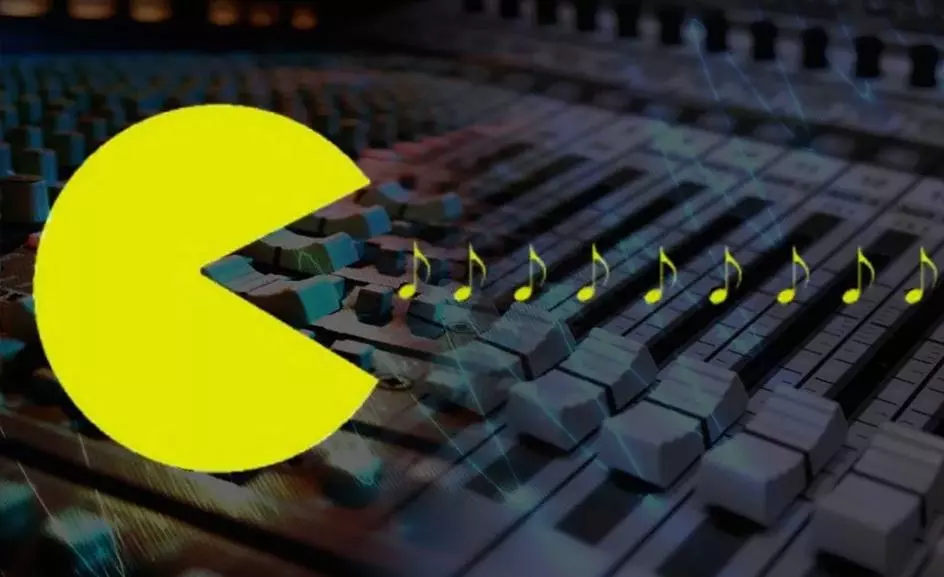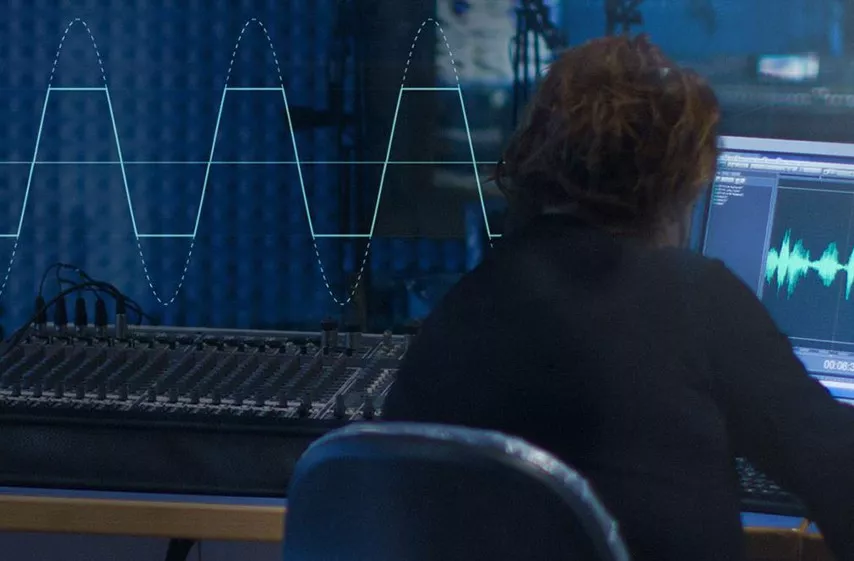How to choose microphone

In today’s world, where microphones play a key role in a variety of applications, choosing the right device is no easy task. The variety of microphones on the market is amazing: they differ not only in cost and technical characteristics, but also in their purpose for certain tasks. Our in-depth microphone guide will help you find exactly what you need for your application.
The first step in choosing a microphone is to determine the purpose for which you will use it. For example, a microphone for recording music will be significantly different from one designed for shooting video on the street. Studio microphones are not suitable for field use, and a lavalier microphone is not the best choice for recording musical instruments.
A variety of tasks entails a variety of microphone types. For example, you can use either a lavalier microphone or a shotgun microphone to conduct interviews. Therefore, it is important to first decide on the direction of use, and then choose a specific type of microphone.
Once you have decided on the type, you should pay attention to the technical characteristics and price range. For example, to run a YouTube channel with reviews and unboxings, it is not necessary to purchase an expensive microphone with many additional features.
In our guide, we will look in detail at how to choose a microphone, taking into account the purpose of use, type, main characteristics and possible additional functions. Separately, it is worth noting that microphone prices are a topic for another article, which we will also pay attention to.
Microphone characteristics
When choosing a microphone, it is important to consider key technical characteristics such as directivity, sensitivity, noise floor, amplitude-frequency response (AFC) and frequency range. These parameters determine the functionality and effectiveness of the device under various conditions. In addition, there are other important aspects to pay attention to, such as the connection type, which can vary significantly depending on the application of the microphone.
Directional pattern
The directionality of a microphone determines how it picks up sounds from different directions, which is a key factor when choosing a device. There are microphones with different types of directivity: omnidirectional (omnidirectional), cardioid, supercardioid and bidirectional.
Omnidirectional microphones pick up sounds equally from all directions, making them ideal for recording atmospheric sounds and for conference use.
Cardioid microphones are most effective at collecting sound from the front and sides, while minimizing sound from the rear. They are suitable for podcasts, streaming, vocal recording and musical instruments.
Supercardioid microphones have similar characteristics, but with a narrower sensitivity area at the rear. This makes them suitable for interviews and reporting as they are better at recording sounds from a distance.
Bi-directional microphones have a figure-of-eight polar pattern, effectively capturing sounds from both the front and rear, but ignoring sounds from the sides. They are ideal for interviews, recording multiple speakers in a studio, and creating narrated videos.
Sensitivity
The sensitivity of a microphone is its ability to convert sound pressure into an electrical signal. High sensitivity means that the microphone is able to capture even very quiet sounds. This is especially important when recording in quiet rooms where fine audio details need to be captured. However, in high noise environments, medium sensitivity microphones are preferable to avoid recording unwanted background noise.
Sensitivity is measured in mV/Pa or dB:
When it comes to microphone sensitivity, it can be specified in different units such as mV/Pa or dB. In the case of millivolts per pascal (mV/Pa), a higher number indicates greater sensitivity. So, a microphone with a reading of 3 mV/Pa will be more sensitive than a microphone with 2.5 mV/Pa.
If sensitivity is expressed in decibels (dB), it is usually represented as a negative number. In this context, the closer the value is to zero (or the smaller it is in absolute value), the higher the sensitivity of the device. An example would be a microphone with a sensitivity of -30 dB, which will be more sensitive than a microphone with a sensitivity of -40 dB.
Noise level
A microphone with low self-noise provides a cleaner, higher-quality sound signal. As a rule, the cost of a microphone and its own noise level are directly related: the higher the price, the lower the noise level. Thus, models in the high price segment usually have minimal self-noise. Mid-range microphones have acceptable noise levels, while budget models can range from satisfactory to loud enough to make you consider investing in a more expensive model.
Frequency response and frequency range
The frequency response, or amplitude-frequency response, of a microphone indicates its ability to perceive sounds at different frequencies. It determines at which frequencies the microphone works better and at which frequencies it performs worse. For example, a microphone with low-mid boost will give voices a warmer, richer sound, while a model with low-mid frequencies will not record overly harsh or high-pitched sounds.
The frequency range of a microphone refers to the range of frequencies that it can pick up. For example, a microphone with a frequency response starting at 100 dB may not be an ideal choice for recording low-pitched sounds such as bass guitar sounds.
For streams, reviews and blogs
For recording dialogue, vocals and videos where the voice is important, USB microphones, lavalier microphones or studio condenser microphones are ideal. Video genres such as streams, reviews, and product unboxings typically require recording in a stable, controlled indoor environment. The main tools for such recording are mobile phones or cameras. In addition to this, streamers sometimes use portable voice recorders and additional equipment, including sound cards, to improve audio quality.
USB microphones
USB microphones are convenient condenser devices that do not require external equipment to operate. Simply connect them to your computer or laptop via USB and you’re ready to record. These microphones can be mounted on a table or mounted on a special pantograph stand.
Condenser microphones are renowned for their high sensitivity, minimal distortion and accurate sound reproduction. They are commonly used in studios and indoor recording. While traditional condenser microphones require external phantom power, USB models have built-in preamps that are sufficiently powered by the USB port.
USB microphones provide excellent voice transmission and are convenient for working at various distances from the device. Many of them are attractive in design and may have built-in lighting. If necessary, due to their sensitivity, the microphone can be mounted on a pantograph outside the frame.
Among the additional features in mid- and high-price USB microphones, you often find the ability to switch between different polar patterns. For example, you can choose cardioid mode for streaming, and bidirectional mode for recording interviews.
The mute button is another useful option, especially compared to muting the sound in software or physically unplugging the cable. This feature may not be available on budget models.
Sensitivity and volume adjustments are a common feature of many USB microphones, allowing you to reduce pickup of background noise or increase volume as you move away from the microphone.
The headphone jack is useful for latency-free monitoring, which is especially important for vocal streams.
In terms of polar pattern, cardioid is ideal for streaming, providing clear voice transmission and cutting out ambient noise. This can be useful, for example, if unexpected events occur during a stream and you need to quickly mute the sound.
The sensitivity of the microphone is also important – the higher it is, the better. Models with adjustability are preferred.
AFC (amplitude-frequency response) allows you to select a microphone with the desired timbre color to reduce the need for post-processing. For example, to add “warmth” to your voice, you can choose a microphone with an emphasis on low frequencies, and to emphasize the clarity and sonority of your voice, a model with an emphasis on high frequencies is suitable.
Lavalier microphones
Lavalier microphones are compact audio voice-capturing devices that are attached to clothing close to the throat. They are ideal for situations where the announcer is moving, recording outdoors, or where external elements in the frame need to be minimized.
Types. There are two main types of lavalier microphones: dynamic and condenser. Condenser microphones represent a balance between price and quality, while dynamic microphones come in both budget and expensive professional models for specialized applications.
Directionality. Most lavalier microphones have an omnidirectional characteristic, which allows them to effectively collect sound without requiring precise orientation to the source. Omnidirectional microphones give you freedom in choosing the mounting location – not only under the chin, but also on the side. There are also cardioid models that provide cleaner sound and are suitable for noisy environments, but they are usually more expensive.
Sensitivity. High sensitivity models are recommended for indoor use, while low sensitivity microphones are better suited for outdoor use.
Frequency response Frequency response (AFC) characteristics are usually not a key criterion when choosing lavalier microphones, since accurate sound transmission is more important than its timbre.
Connection methods. Lavalier microphones for cameras are connected via a 3.5 mm mini-jack, USB-C is used for Android devices, and Lightning is used for iPhones.
Wired and wireless options. Budget models are usually connected with a wire, the length of which can reach 6 meters, which is enough for indoors. Wireless systems, which are more expensive, consist of two parts: a receiver and a transmitter connected to a microphone. The cost of wireless systems depends on the operating radius and connection reliability.
Studio condenser microphones
Studio microphones are often the choice for online music streaming, but they are less common in other YouTube video genres. Using such a microphone entails the need for additional equipment, appropriate software and certain skills.
To connect a studio microphone to a computer, you need a special sound card, intended not for games, but for musical purposes. These cards are quite expensive and require some experience to set up. The software required for operation usually comes bundled with a sound card or microphone. While this software may not be the best for audio processing, it is suitable for beginners.
Beginning YouTube vloggers are not recommended to immediately purchase professional microphones, as they are expensive and difficult to learn. Instead, it’s best to start with USB microphones, which provide good sound quality but don’t require extensive audio recording knowledge.
In terms of features, they are similar to USB microphones: most often they are cardioid microphones, some of which offer the ability to switch between multiple directions. High sensitivity and low noise level, as well as the ability to adjust the amplitude-frequency response (AFC) to individual needs, make them the preferred choice for advanced users.
For outdoor video recording
When shooting outdoors, lavalier microphones and shotgun microphones, also known as shotgun microphones, are the best choices. The main function of these microphones in such conditions is to accurately record the desired sound while suppressing background noise. Given that outdoor environments are often noisy, high-sensitivity condenser microphones are not the best choice unless you are intentionally recording natural sounds such as the sea, forests, or city sounds.
Lavalier microphones – wireless
The criteria for selecting equipment for outdoor recording are similar to those for indoor recording, but wireless devices are often preferred for outdoor work. In such situations, it is worth investing extra in wireless equipment to provide greater freedom of movement. Although a 6 meter cable may seem sufficient, in practice it can become an obstacle, especially when actively moving. In addition, frequent folding and unfolding of the cord can lead to tangling, which creates additional inconvenience comparable to tangled headphones in your pocket.
Shotgun microphones
Microphones, called shotguns, are elongated devices designed to connect to cameras or smartphones. They are able to record sound coming directly in front of them, while effectively suppressing external noise. These mics provide clearer, more natural sound than camera or phone built-in mics, without being caught in the frame or causing cable problems.
There are also larger versions of shotgun microphones that are mounted on long stands. They may occasionally appear on camera in TV shows or series. These are professional devices, the cost of which is higher than that of smaller models, but the selection criteria are similar.
Directional pattern. For shotgun microphones, supercardioid or cardioid models are preferred. Supercardioid microphones are especially valuable for their ability to record sound over a greater distance, providing flexibility in operation.
Sensitivity. Given that the guns are designed for use in noisy environments, their sensitivity is adapted accordingly. Models with adjustable sensitivity are a useful choice, allowing you to adapt to different situations.
Frequency response. Given the specifics of their use, the amplitude-frequency response is not a key factor.
Connection methods. For cameras, a 3.5 mm connector is often used; for phones, a 3.5 mm, USB-C or Lightning connector is often used, depending on the device model.
Additional functions. When choosing a shotgun for your phone, it is important to make sure that the microphone does not fall into the frame. Differences in smartphone design may affect this. Microphones for cameras and phones are often equipped with vibration dampers to reduce vibration noise, although such dampers are less common in phone models.
Wind protection. The microphones are equipped with a removable windshield made of foam or fluffy material, the latter sometimes called “dead cat” due to its appearance. This protection effectively reduces wind noise.
Using a low-pass filter has proven effective in getting rid of unwanted low-frequency sounds, such as city traffic noise, in audio recordings. Having an audio output for connecting headphones is also important because it allows you to monitor the audio signal in real time while recording.
For video recording using microphones, a key consideration is the choice between recording audio separately or recording audio and video simultaneously. This choice is especially relevant for microphones intended for use with mobile phones. While recording audio and video simultaneously saves time by avoiding the need for synchronization, it can sometimes be useful to have separate audio tracks for more flexible post-production processing.
For recording vocals and instruments in the studio
Professional microphones are devices that convert sound into an electrical signal with high quality and minimal noise. To use them, you need an audio interface, special software and audio skills. This is a serious tool that requires knowledge and experience.
Type. A condenser microphone is suitable for recording vocals, guitar and other instruments that do not have sudden changes in volume. A dynamic microphone handles sudden changes in volume better, making it ideal for recording drums.
A condenser microphone is a “charged” capacitor. Sound waves cause the membrane to vibrate, and these vibrations change the capacitance of the capacitor. This type of microphone has higher sensitivity and lower resistance to overload than dynamic microphones.
Diagram. In most cases – cardioid. To record several instruments at the same time or a guitar with vocals, a figure eight or pie chart is suitable.
Sensitivity. Depends on the tasks. There is no extraneous noise in the equipped studio, so high sensitivity will provide the opportunity for adjustments and increase the detail of the recording. But for recording drums and similar scenarios, high sensitivity is unnecessary. A model with level adjustment is the best option.
The frequency response and range are also selected for specific needs. There are plenty of options in the professional segment. To record bass, it makes sense to choose a microphone with a wide low-frequency range, and for vocals – with the necessary accents in the frequency response.
Noise level. The lower the better. Expensive professional microphones have a noise level below the human hearing threshold.
For work and communication
For Zoom meetings and Discord conversations, you can use a variety of microphones: from those built into gaming headsets to desktop USB models. It is important that the voice sounds clear, without distortion or synthetics, and that surrounding noise is suppressed. And additional parameters and natural transmission of voice timbres are not critical – it’s not worth overpaying for it.
Headset. An easy option is to buy a headset with a good microphone. There are enough models: from budget ones for the price of three packs of “elite” dumplings to expensive wireless ones with radio communication. The segment of office headsets for contact centers is still alive, where the emphasis is on the microphone – there is no need to overpay for unnecessary high sound quality in the speakers. This model is suitable when you need to talk a lot – as, in fact, in a contact center. Or for constant calls with clarifications and corrections.
Budget computer headsets use electret microphones, which are similar in principle to condenser microphones, but do not require phantom power. The sound quality is lower than that of condensers. There are desktop electret microphones – this is also a good budget option.
Lapel or USB model. Is the headset tiring and overwhelming in the frame? Then you should look towards inexpensive lavaliers and USB microphones. Suitable lavalier models are cheaper and easier to use, but if you forget to take them off after finishing a call and stand up, the wire and microphone jack in your PC or laptop will be in danger.
An inexpensive USB condenser microphone is a versatile option. Doesn’t require any special settings, but produces good sound. In a meeting, your voice will always stand out from your “headset” colleagues. The main thing is to install and adjust so that the microphone does not “catch” surrounding noise.
For performances
Dynamic stage microphones are used for musical or spoken performances. Some musicians also choose condenser models on stage, but these are rather exceptions due to extensive experience and the specifics of the music being performed.
Dynamic microphones, as stated, are less sensitive and more resistant to overload, which is exactly what you need on a noisy stage with volume jumps and changes in the distance to the microphone. Stage microphones are placed on a stand or held in the hand. The capsule in them is protected by a metal mesh with built-in wind protection.
Main parameters. The diagram is cardioid, the sensitivity is high, but not too much, the frequency response depends on what range needs to be emphasized and what instrument is playing.
Strength. A stage microphone must be durable. It is not used in a sterile studio environment, but in a hostile and sometimes unpredictable environment. Legendary models from Shure, AKG and Sennheiser can easily withstand falls from a stand, throws into a wall and other “stage activities”.
Connection. For spoken performances, a wired version is suitable, and for running around the stage and dancing while performing a hit, a wireless one is suitable. Wireless sound transmission is implemented via a radio channel, the principle is the same: there is a transmitter in the microphone, and a receiver closer to the speakers.
For fun
Decorated with lights, ears, eyes and other fun additions, microphones are perfect for entertaining. While they may not provide high-quality sound, they are great for karaoke as you can easily connect them to your phone and sing along, with the music and voice playing through the built-in speaker. However, purchasing such a microphone for 1000 rubles for the purpose of using it in professional situations such as weddings or corporate events may be considered inappropriate.
Tips for choosing
Choosing a microphone does not require extensive knowledge of sound recording or acoustics; the most important thing is to determine your needs. USB microphones are recommended for creating content on YouTube, such as streams or reviews. If the task is to shoot video outdoors, then you should pay attention to directional microphones and ambient microphones, suitable for use with phones or cameras. To record music or vocals in a home or professional studio, it is advisable to choose a professional microphone with additional equipment. For everyday work and communication, a more affordable laval or USB microphone, or a high-quality computer headset is suitable. For live performances, it is better to choose a reliable dynamic microphone. And as an original gift, you can consider a karaoke microphone-speaker.










